Many of my fellow creators are looking for Mega Creator alternatives because they feel cramped when they want to really make something unique in it. While Mega Creator is sufficient for basic design needs and has ready-to-go templates and simple drag-and-drop tools, it is impossible to keep the brand elements consistent across projects or tackle more sophisticated design work.
This feedback sparked my interest, and I decided to test 25+ Mega Creator alternatives that could bridge these gaps while staying user-friendly. I zeroed in on alternatives that offer template variety, serious customization control, support team collaboration, and adapt well to different design challenges.
To provide a fair assessment, I collaborated with my FixThePhoto team to thoroughly evaluate each option. We wanted to see which alternatives could solve Mega Creator’s weak spots while remaining intuitive for both beginners and seasoned designers.

Simply put, Adobe programs deliver unmatched flexibility and pro-level control. Adobe Express is a perfect example. It combines lightning-fast social media design with smart AI assistance. Plus, you get instant access to premium Adobe Fonts and Stock libraries.
Adobe has a large group of programs that work smoothly together. I may sketch an idea in Adobe Express, then easily move it to Photoshop or Illustrator for complex tweaks. The quality stays perfect throughout. Mega Creator handles basic layouts just fine, but Adobe outperforms it when I need sophisticated branding or intricate edits.
Adobe also brags about its flexibility. No matter if I’m creating a simple image, building an entire brand campaign, or designing something for printing, Adobe keeps up with me. Unlike jack-of-all-trades platforms that break down during complicated processes, Adobe handles it all. When I need the best Mega Creator alternative, Adobe is the only one I count on.
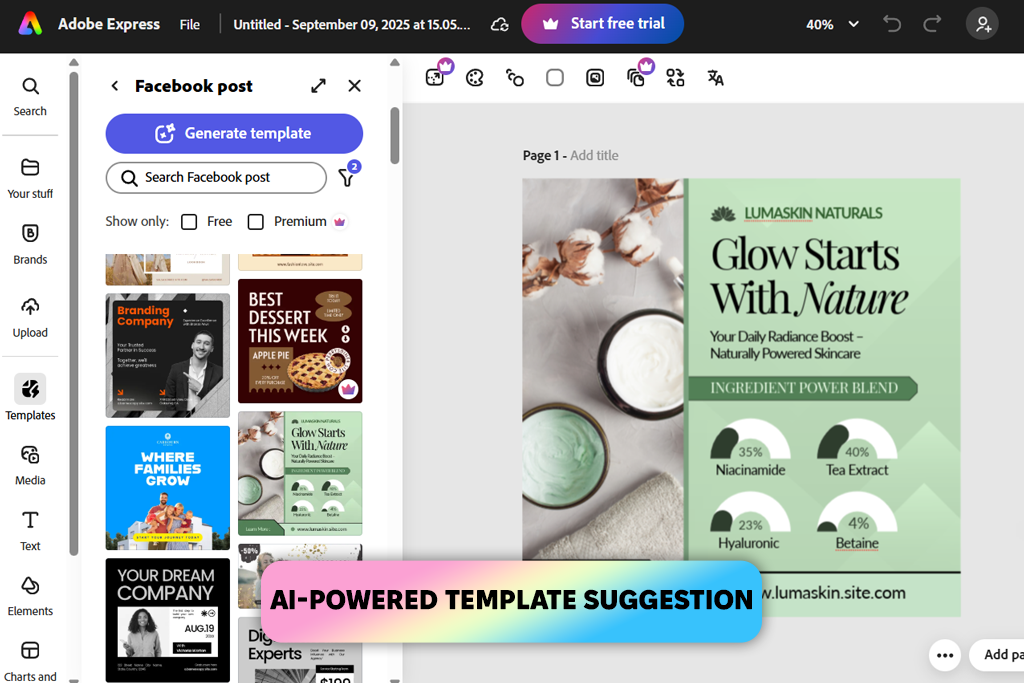
The minute I realized that Mega Creator was too basic, I jumped straight to Adobe Express. Mega Creator boasts easy collaboration and straightforward tools, while Adobe Express delivers intelligent AI recommendations and lots of templates.
Using them, I was able to cut my social media project time in half. Moreover, I took advantage of the integration with Adobe Fonts and Stock. When I needed distinctive fonts for a client’s poster design, they were available instantly within the same workspace.
As for less pleasing things, Adobe Express required more time to master. Besides, you need to pay to access power features. Mega Creator definitely scores points for being affordable and user-friendly during rushed team projects. But whenever I wanted advanced customization options or top-tier design elements, Adobe Express completely surpassed Mega Creator.

I’ll never forget that crazy afternoon when my client needed Instagram posts on short notice. Fortunately, I used Canva. I jumped into their logo creator and grabbed some of their pre-made social media designs.
In just one hour, I had a complete set of posts that looked professional and matched my client’s brand perfectly. Based on my experience, Mega Creator is great when I need to collaborate quickly with my team, but it just doesn’t have the huge selection of templates that Canva offers.
This Mega Creator alternative is very beginner-friendly. I had zero design experience, but I managed to create the required materials quickly. You just need to drag and drop elements, which is simpler than with Mega Creator. When I got stuck trying to upload my own fonts, I looked for the solution in Canva’s help section.
The only downside is that if you want advanced features, your wallet will definitely feel it. Mega Creator is easier on the budget, especially when you’re working with a whole team.
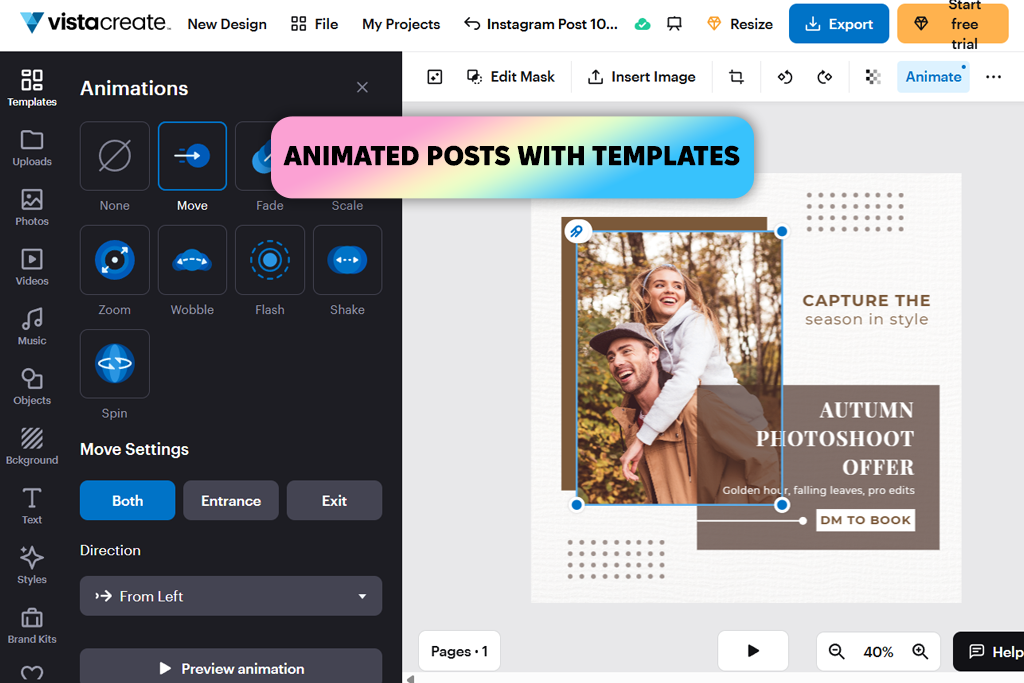
I discovered VistaCreate by accident when I was hunting for Mega Creator alternatives with more animation options and video features. I had a small business client who needed Facebook ads and promotional flyers, so I decided to try this program.
The drag-and-drop interface is very intuitive. I finished the job quicker than I thought possible. I liked that VistaCreate didn’t bombard me with a million confusing options like some VistaCreate alternatives do. It is user-friendly yet powerful.
When I stack VistaCreate up against Mega Creator, it’s clear they took different approaches. VistaCreate isn’t packed with AI features or tools for realistic photo blending. It is a cheap program with lightning-fast speed.
I did run into some issues with their background remover tool. It left rough edges that I had to clean up by hand. Mega Creator has an AI tool that perfectly copes with the task. Still, when I just needed something quick and wallet-friendly with ready-made designs, VistaCreate totally beat out Mega Creator for my needs.
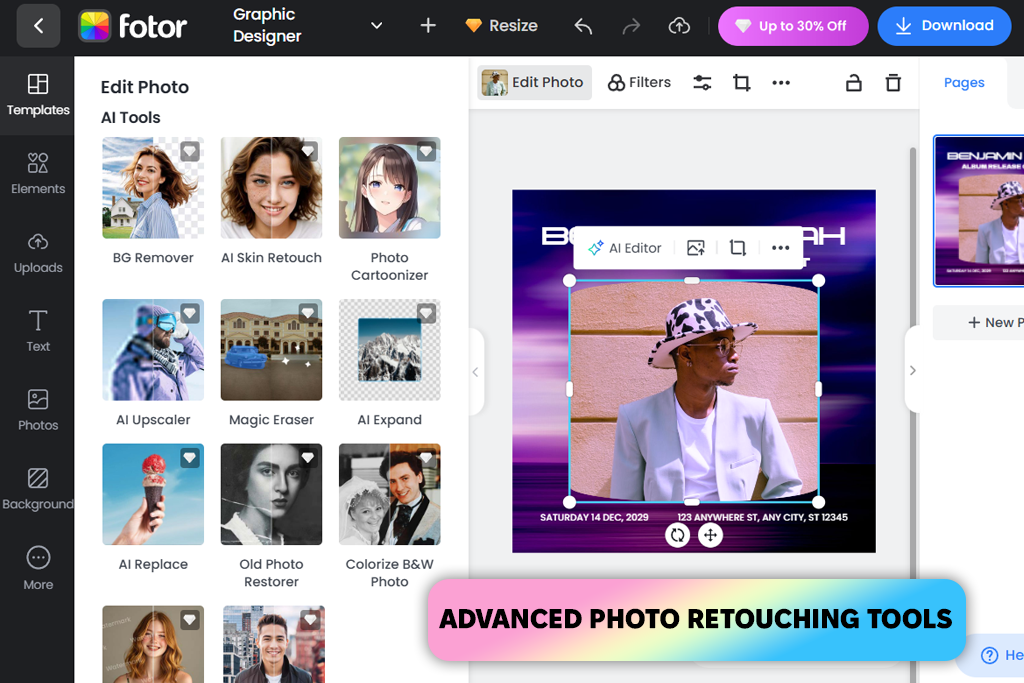
While testing Fotor, I was amazed by its photo editing capabilities. I was working on product pictures for my online business. I did simple edits, fixed imperfections, corrected colors, and tried out different filters.
I received professional results without having to use Photoshop. Later, when I needed to build a mood board for presenting ideas to a client, I used the same editing and collage features.
Mega Creator is pure design software, while Fotor is basically a photo editor with some design features added as extras. When it comes to AI-generated compositions with backgrounds and models, Mega Creator definitely comes out ahead. But Fotor was unbeatable when I needed to carefully edit and perfect real images.
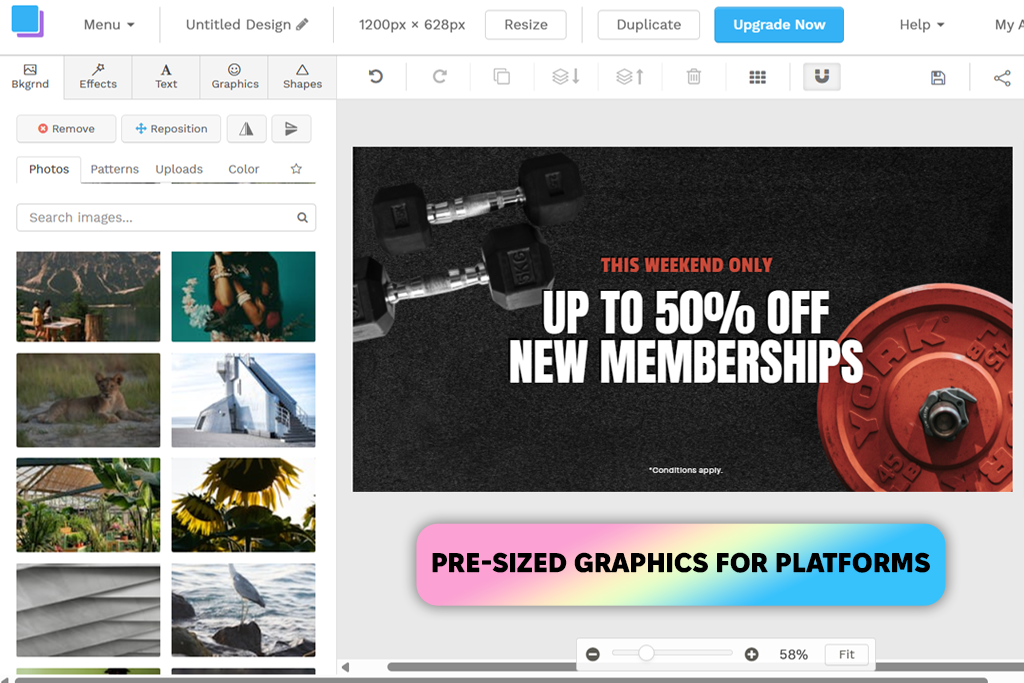
I discovered Snappa through my teammate Kate’s recommendation when I was scrambling to make visuals for Facebook and LinkedIn content. This is one of the most user-friendly Mega Creator alternatives.
I just select a template pre-fitted for each social network, add my words and some icons, and finish the project in just a few minutes. During that rush job campaign, Snappa completely one-upped Mega Creator because it didn’t constantly nudge me toward AI-generated designs that I rarely actually want to use.
The downside is that Snappa is obviously much simpler than Mega Creator. You won’t find any advanced AI features or lifelike photo blending options.
But when I needed to work fast, Snappa’s straightforward approach was very helpful. Rather than getting lost in all the bells and whistles that Snappa alternatives offer, I could jump right in and have my social media graphics finished in lightning speed.
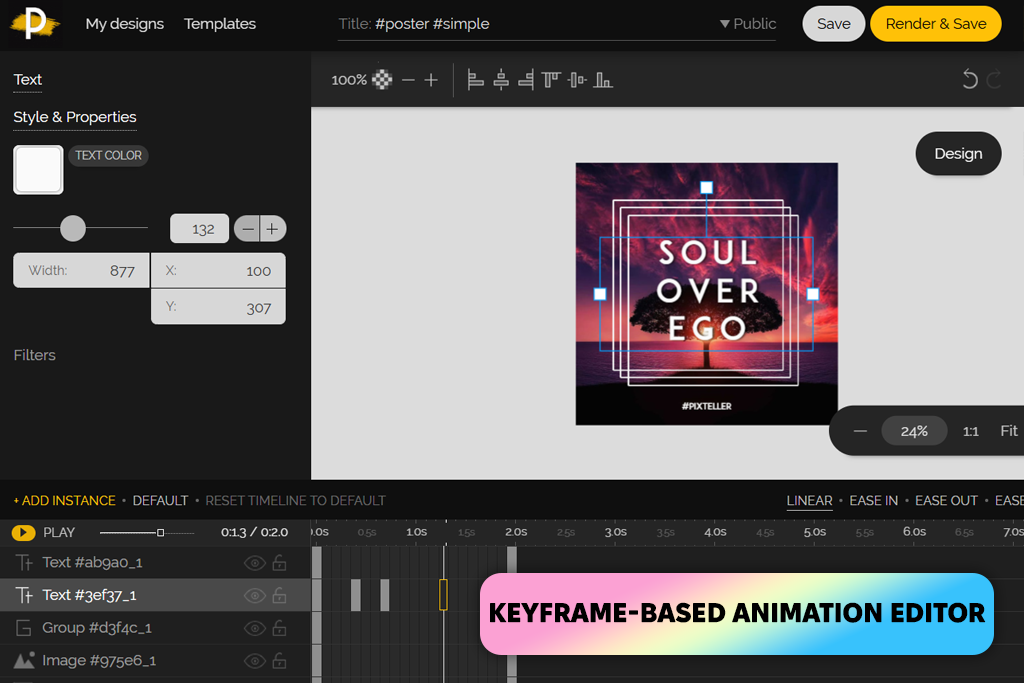
PixTeller has cutting-edge animation features. I made a quick animated ad for a client’s Instagram Story. Besides, there are intuitive keyframe controls that you can typically find in beginner-friendly video editing software. Mega Creator, on the other hand, can’t match this level of animation control. It’s much better suited for fixed layouts and AI-generated photo mashups.
On the flip side, I faced seriously sluggish export speeds when working on a complicated project. It was irritating compared to how zippy Mega Creator handles file exports. Even so, I like the possibility to make my graphics move and come alive, particularly for social media campaigns where animated content definitely catches more eyeballs.

While searching for a Mega Creator alternative to build an engaging workshop presentation, Visme caught my attention. This platform goes far beyond basic design tools. It has a timeline-based animation system, using which you can create professional motion effects.
Besides, it is possible to integrate interactive elements, e.g., quizzes and forms directly into the slides. It reminded me of online slideshow maker with some design features. Visme delivered results that Mega Creator simply couldn’t achieve.
Still, keep in mind that Visme takes more time to master. The interface has more features than simpler tools like Canva or Mega Creator, so it feels overwhelming at first.
I was amazed by how incredible it is for creating professional, branded materials. While Mega Creator excels at churning out quick graphics with AI help, Visme gave me amazing flexibility to tackle presentations, infographics, and rich media projects all in one place. I believe it is a must-have tool for serious business work.
When I started researching Mega Creator alternatives, my goal wasn’t to just make another comparison table of design apps. I wanted to find tools that could actually fix the issues I constantly ran into in Mega Creator, like limited customization, trouble keeping brand consistency, and weak teamwork features.
To do it right, I didn’t just browse product pages or read reviews. I spent several weeks actively designing with my FixThePhoto team across different projects, from social media graphics and promotional videos to client brand kits and infographics. We wanted to see which platforms could really deliver under real-world creative pressure, not just look good on paper.
Each tool was tested for at least 3 full projects: a social media campaign, a client presentation, and a marketing visual set. We worked solo and collaboratively, using both desktop and mobile versions if any. By the end, we had a ton of notes on which platforms were real Mega Creator upgrades and which ones just weren’t built for serious design workflows. Each tool was rated on:
The full testing process took around 4 weeks and included over 25 tools. After back-to-back testing, the list you see in this article only includes platforms that genuinely outperformed Mega Creator in creative flexibility, design precision, and real project readiness. Tools that didn’t make the final cut:
By the end of our testing marathon, I had a crystal-clear picture of which Mega Creator alternatives are true upgrades, balancing creative freedom, smart automation, and efficient teamwork, and which are better left for quick, one-off visuals.